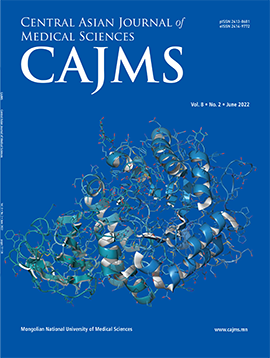Clinical Profile of Pediatric Cataracts in a Tertiary Eye Care Center in Mongolia
DOI:
https://doi.org/10.24079/cajms.2022.03.009Keywords:
Etiology, Congenital, Cataract, Morphology, DevelopmentalAbstract
Objective: To describe the clinical characteristics of pediatric cataracts in children undergoing surgery in our tertiary care center in Mongolia. Methods: Patients aged ≤ 18 years who underwent pediatric cataract surgery over a three-year period at our pediatric hospital in Mongolia were included. The data collected included: demographic information, family history, laterality, morphology, etiology, and coexistent ocular and systemic disease, age at diagnosis. Results: Over the 3-year study period, 118 children underwent surgery for pediatric cataracts. Sixty participants (53.4 %) had congenital and 92 (78 %) had bilateral cataracts. The most common etiology of pediatric cataracts was idiopathic (34 cases, 28.8 %). Lamelar cataracts were the most commonly observed pediatric cataract (23.8 %). Microphthalmos/microcornea was the most frequent ocular malformation seen in pediatric cataracts. Conclusions: The most common etiology of congenital cataracts was idiopathic, whereas developmental cataracts were most commonly hereditary. In almost all patients, the main morphology of congenital cataracts was nuclear, and the main morphology of developmental cataracts was lamellar. In congenital and developmental cataracts, the main associated ocular disorder was microphthalmos/ microcornea. The most common associated systemic disorder in developmental cataracts was Type 1 diabetes and in congenital cataracts was Down syndrome.
Downloads
210
Downloads
Published
How to Cite
Issue
Section
License
Copyright (c) 2022 Mongolian National University of Medical Sciences

This work is licensed under a Creative Commons Attribution-NonCommercial 4.0 International License.




